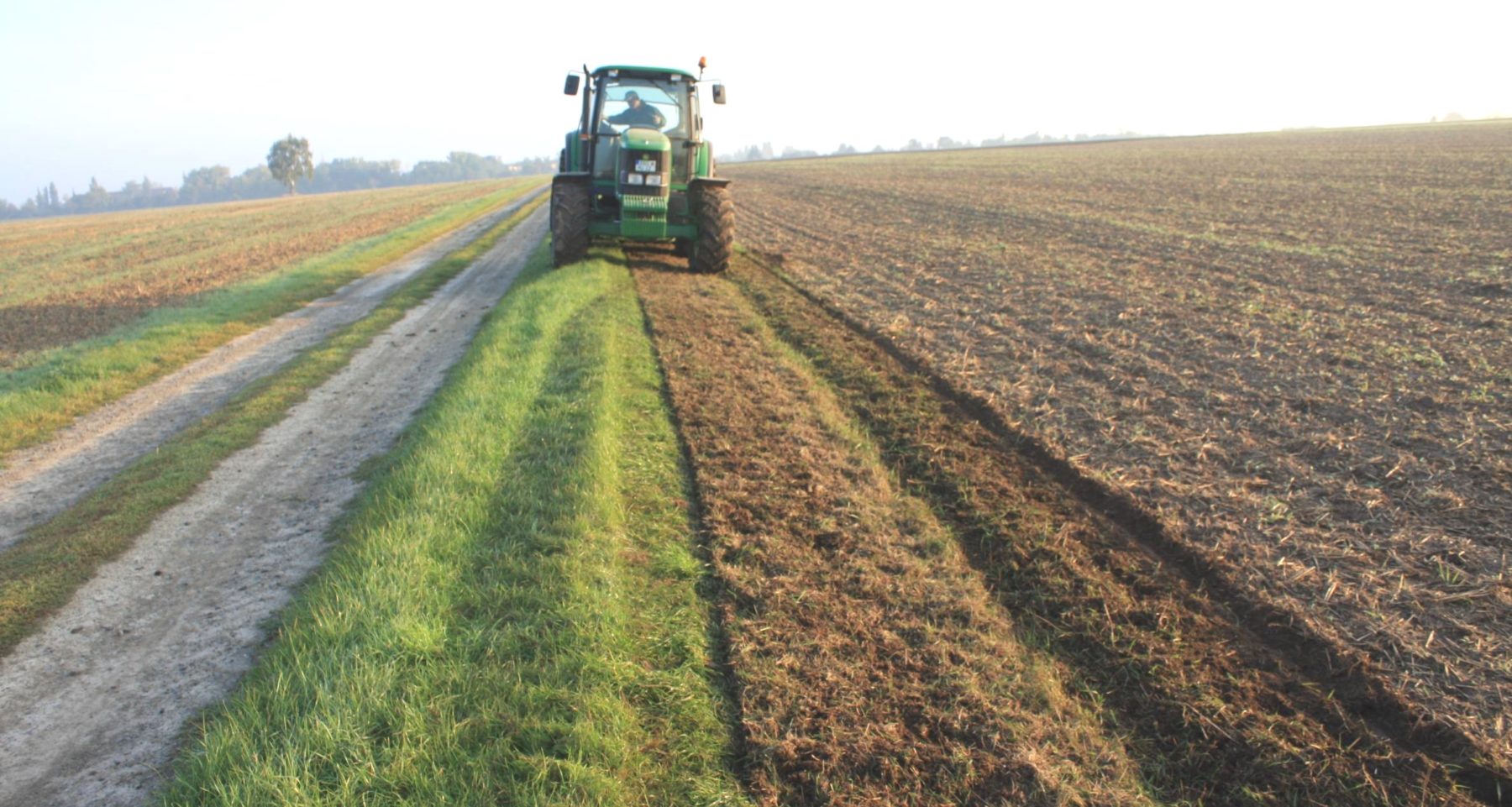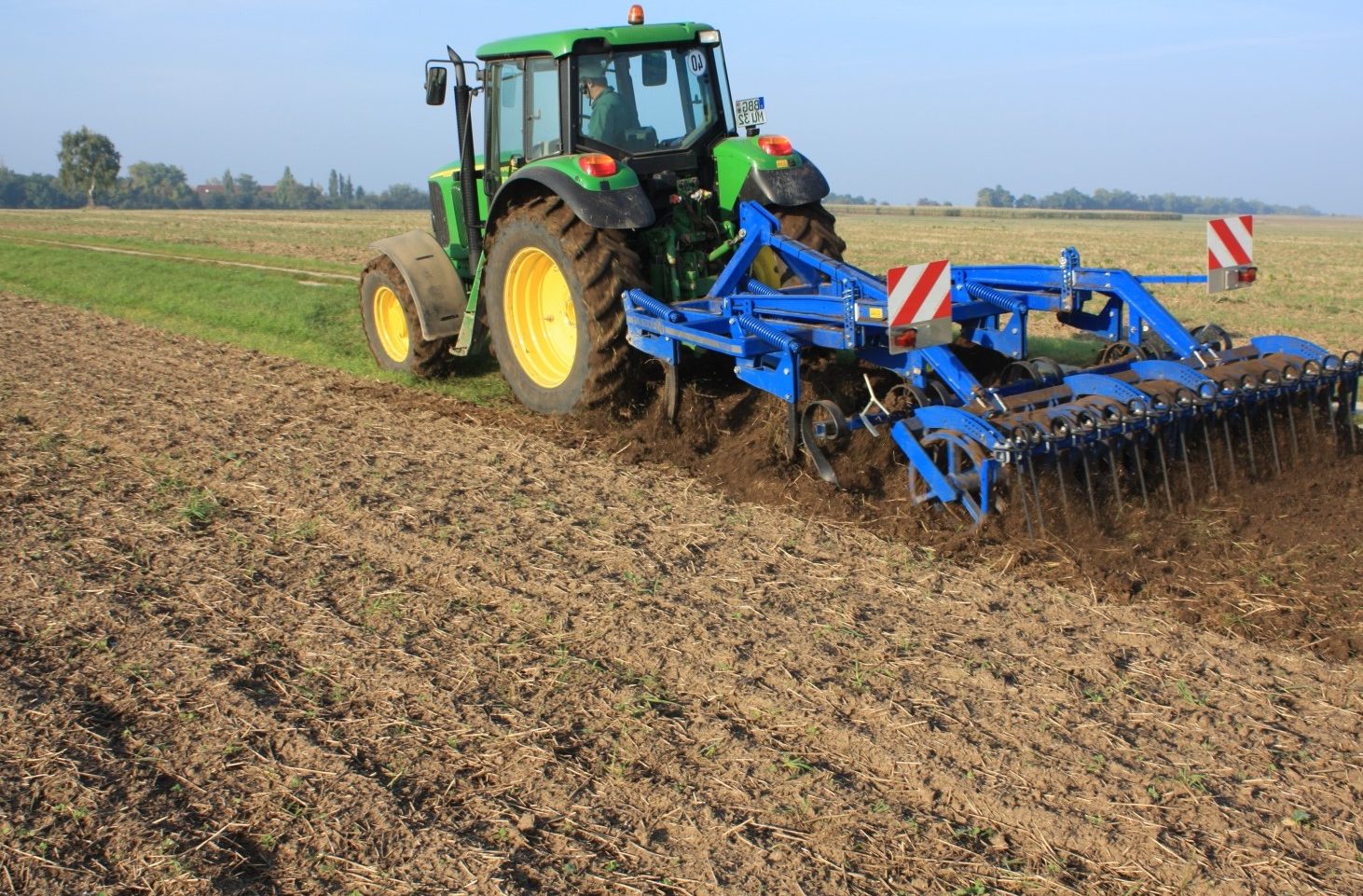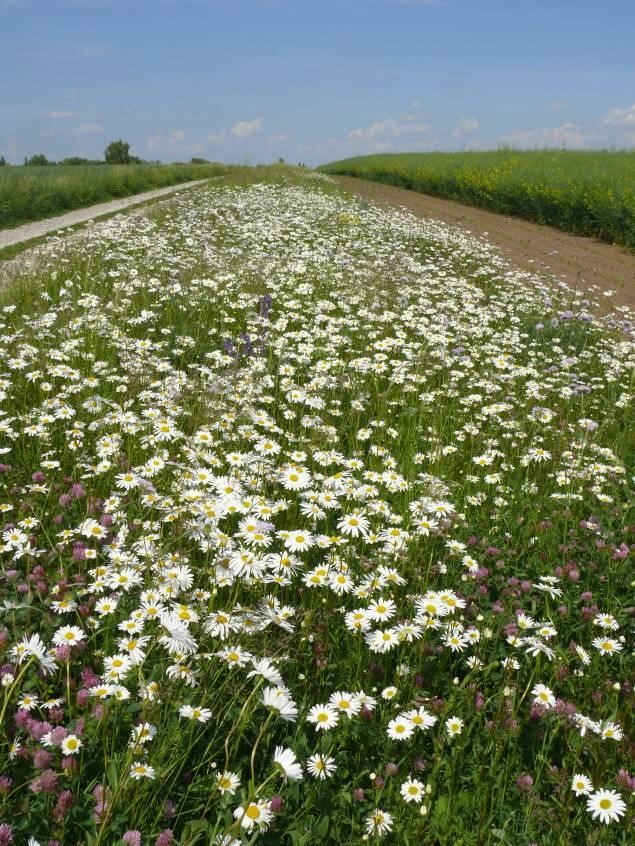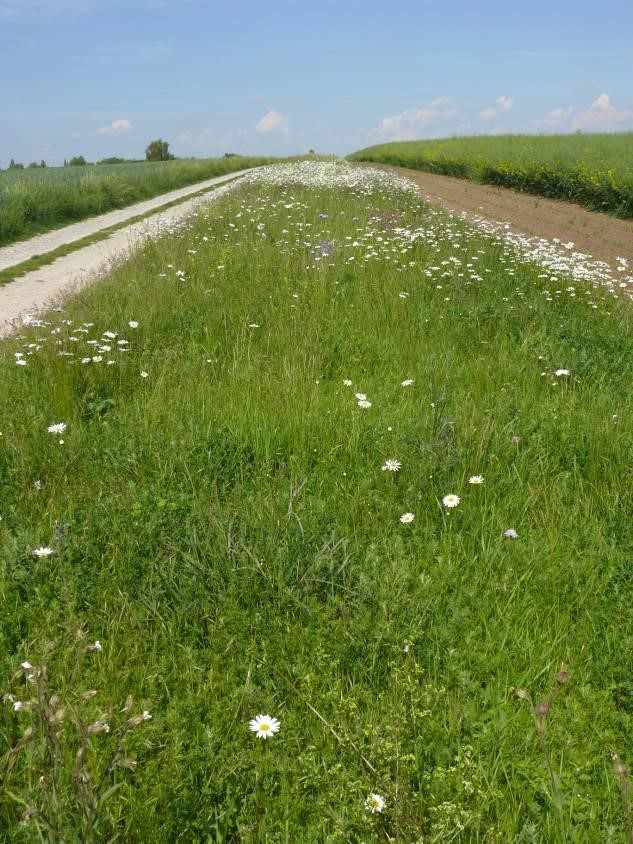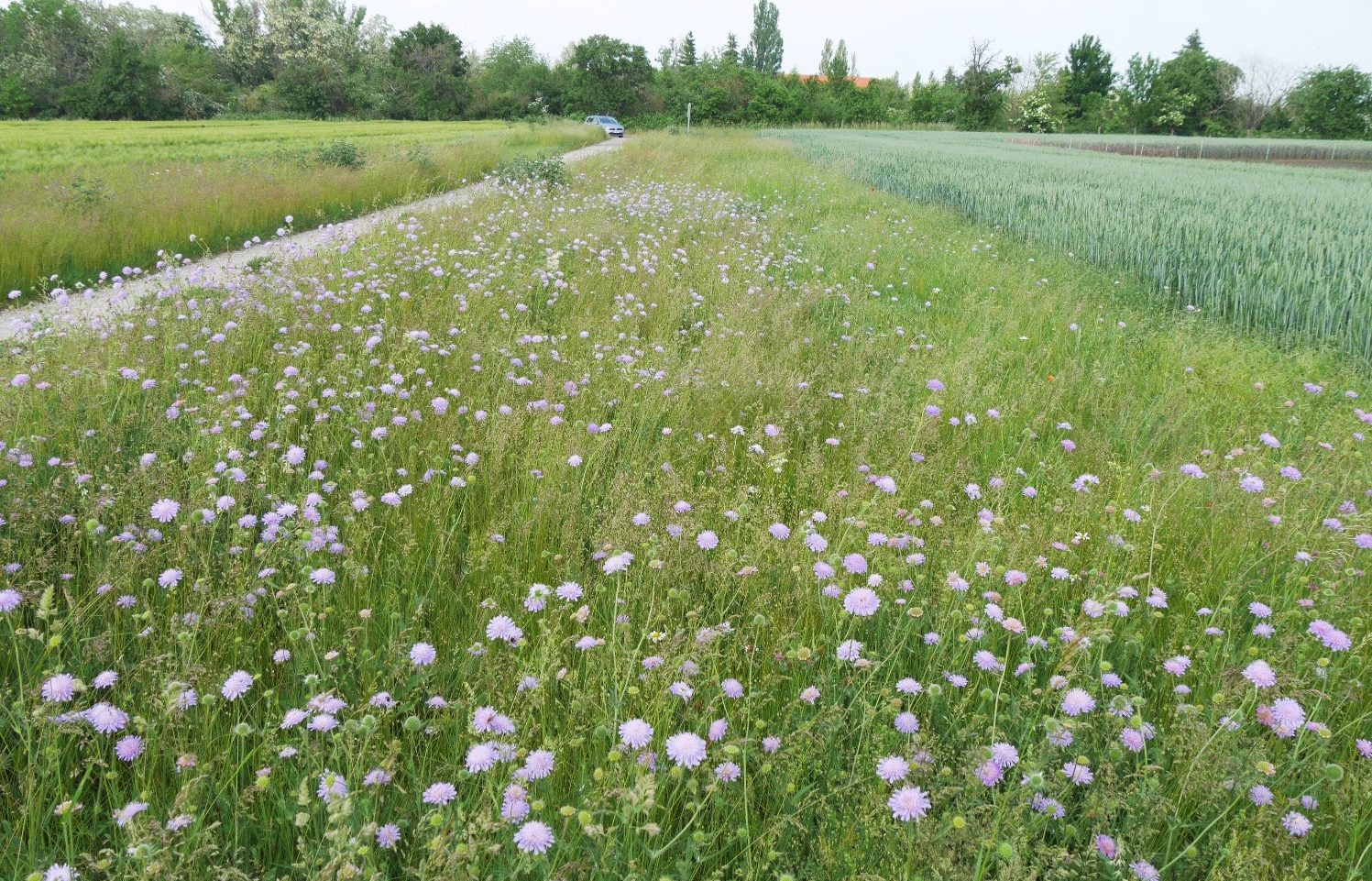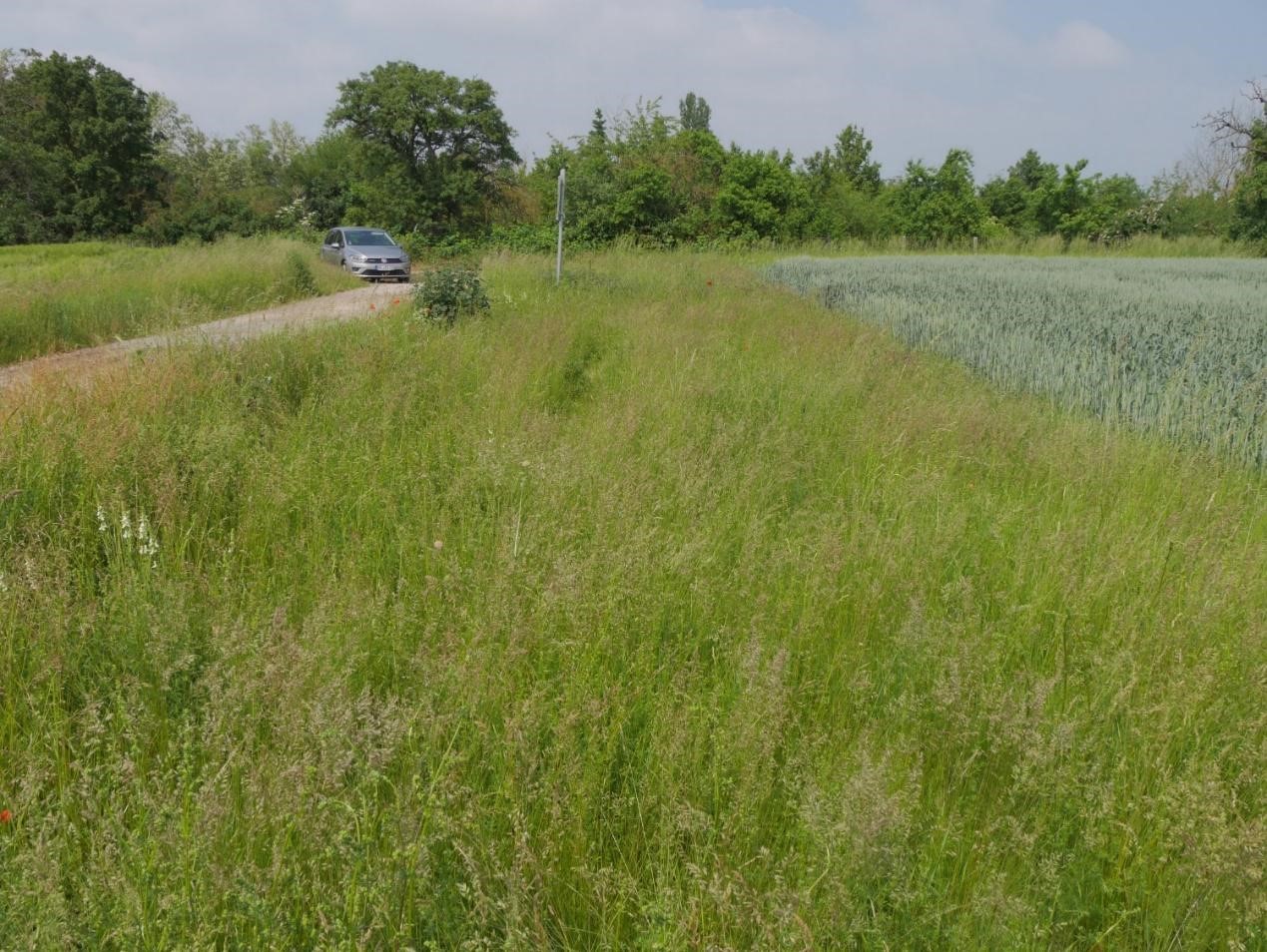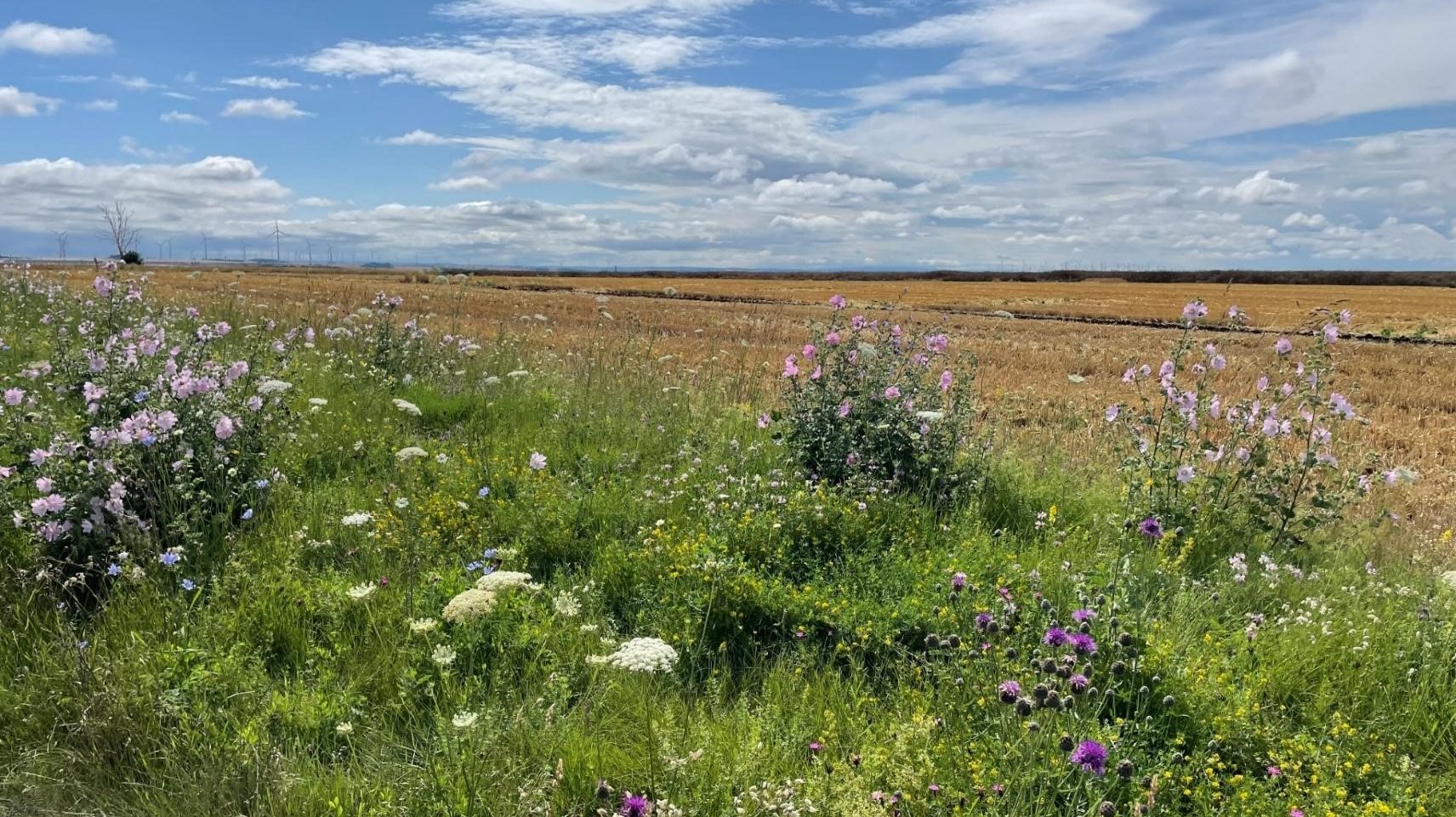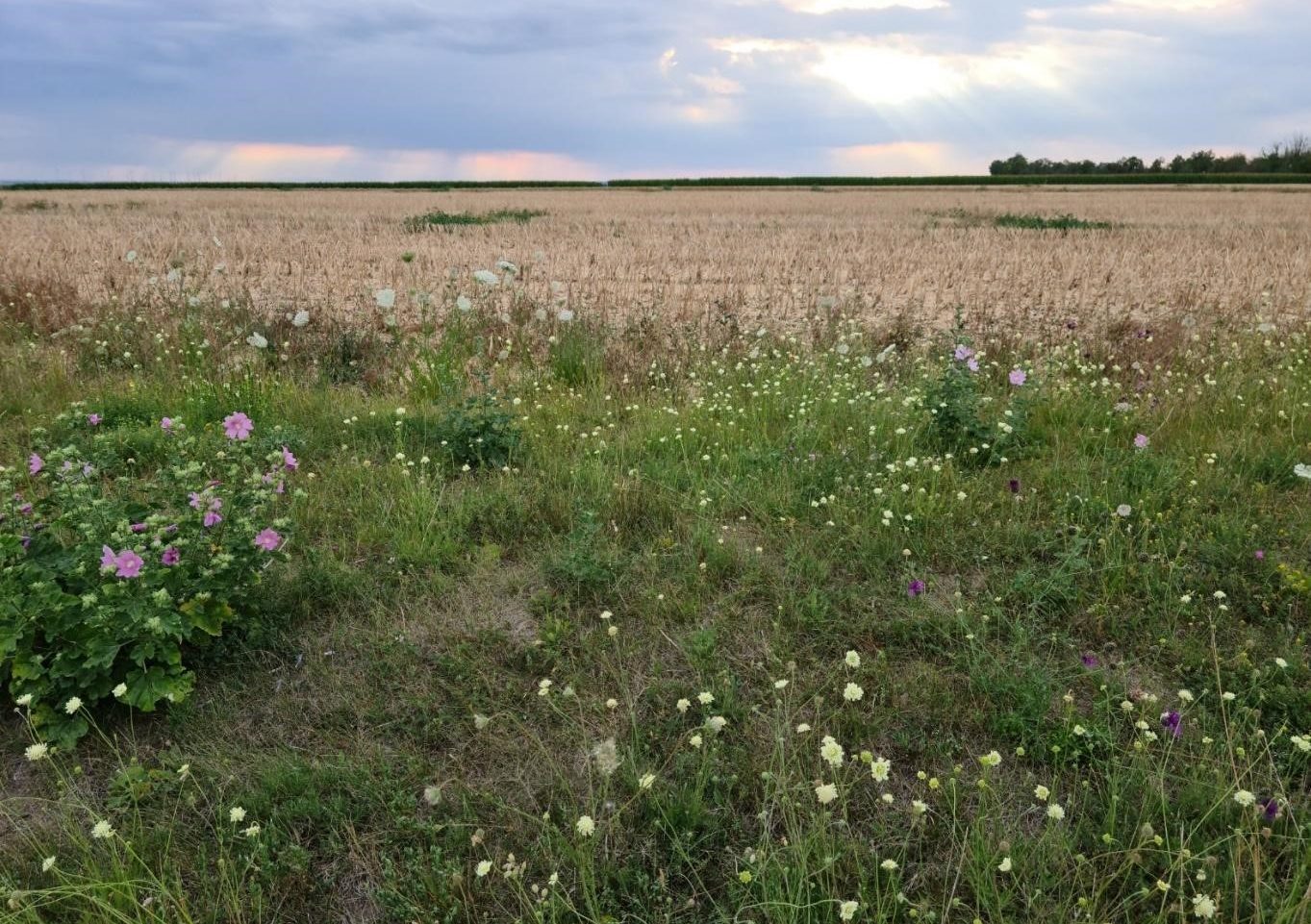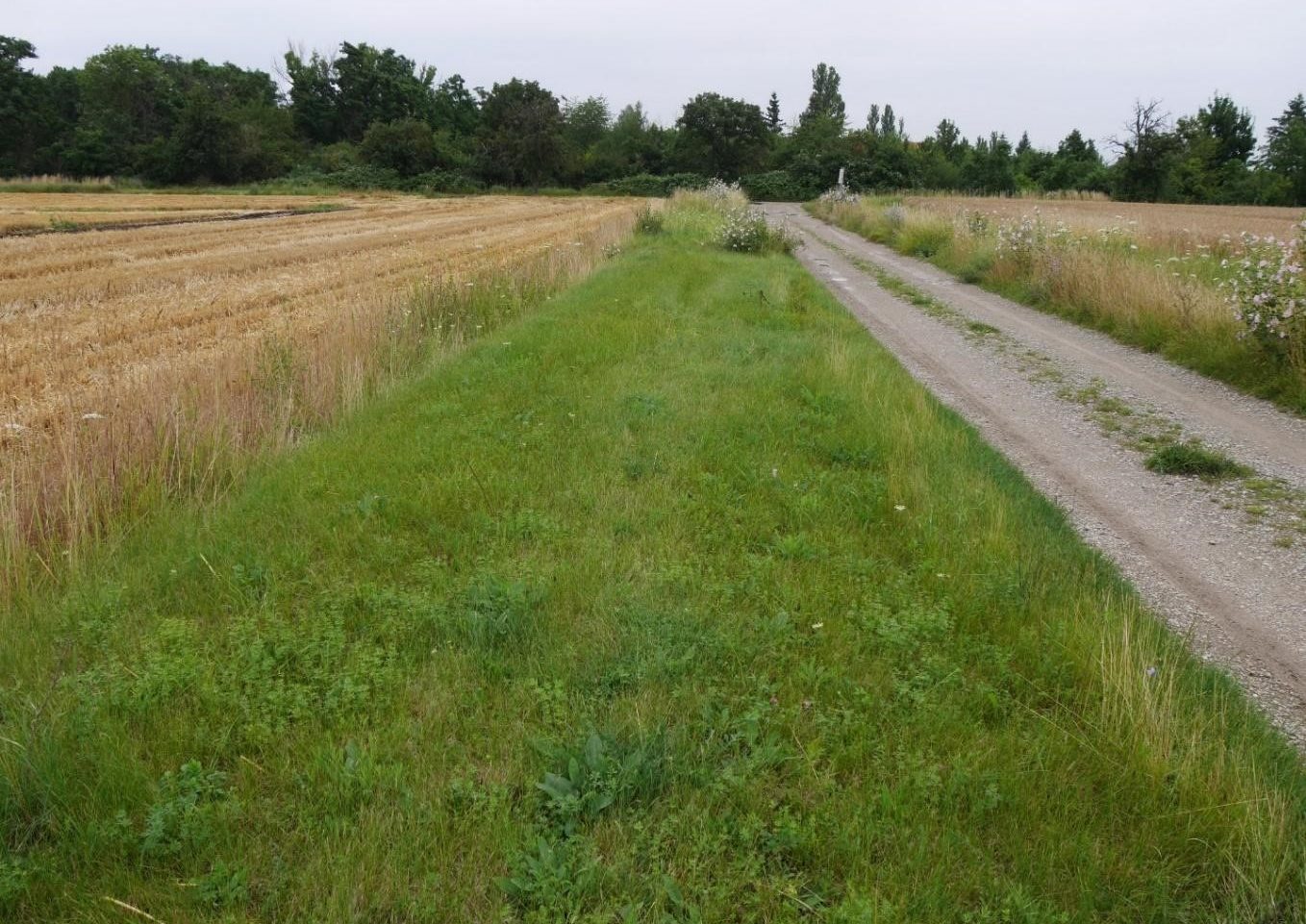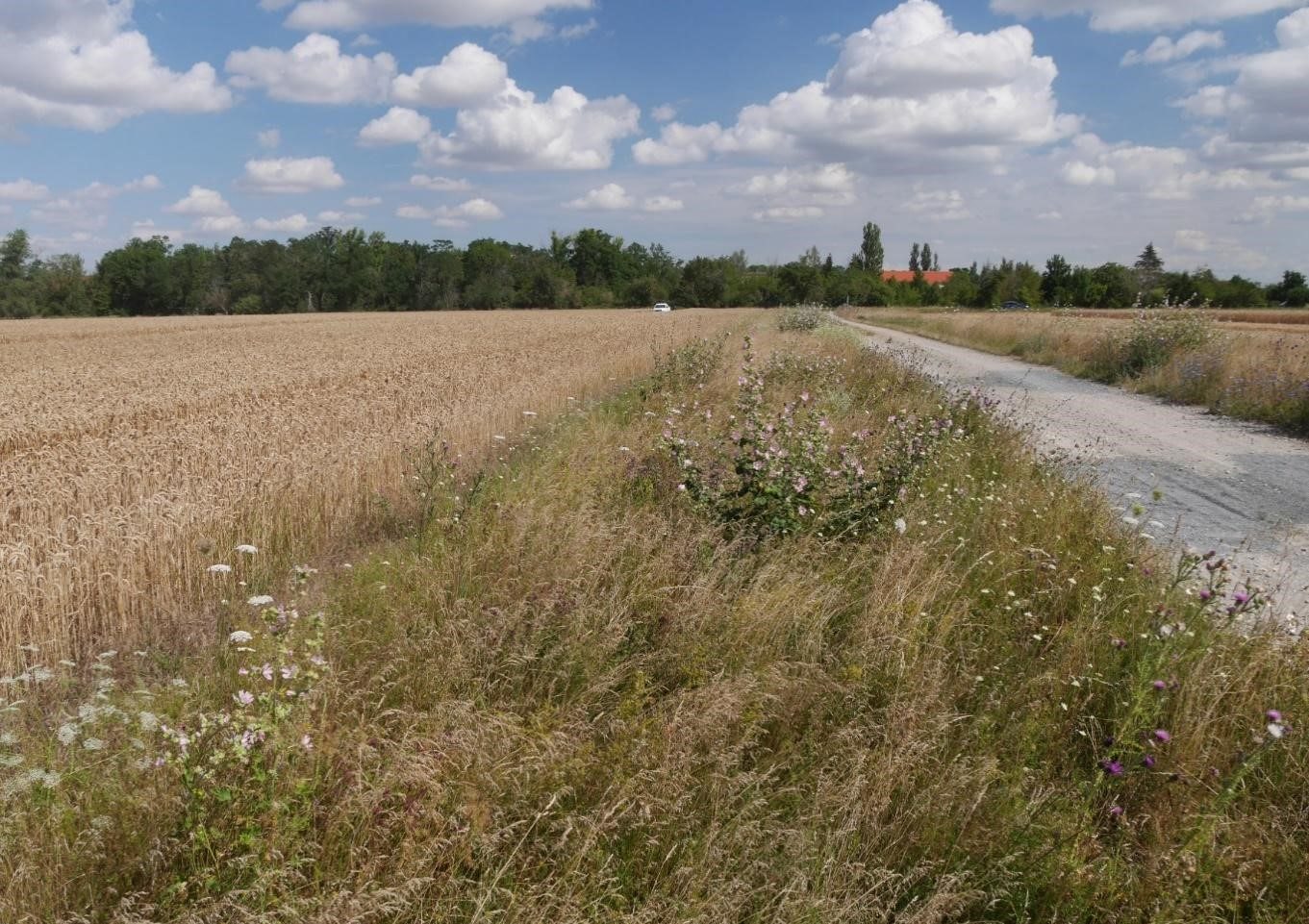Overview
Overview: The campus of the Anhalt University of Applied Sciences hosts several experimental sites supporting the biodiversity of higher plants, insects, and other organism groups in intensively used agricultural landscapes, serving educative and research purposes, and increasing the aesthetical value. These experimental sites include several species-rich field margins established from a regional seed mixture.
Background: The historical landscape was composed of a mosaic of various types of habitats. The impact of large-scale and intensive agriculture changed the landscape structure affecting not only the abundance of endangered species but also other species relatively common in the past. Field enlargements and inappropriate management led to the loss in quantity and quality of field margin sites. Attempts to increase biodiversity have been previously conducted in agricultural as well as other human-made landscapes.
Keywords: demonstration, training, regional seed mixture, biodiversity, agricultural landscapes
Target group: vocational education and training + further education
Orientation: agriculture
Practical information:
- Accessibility: freely accessible
- Guide needed: no
- Best season for visit: May – September
- Regular field trips: yearly monitoring (contact: Anita Kirmer, [email protected])
Training value: Regular monitoring of the sites allows an assessment of different cutting times on vegetation development since 2010/11. The sites are best practice examples for the promotion of biodiversity in field margins of intensively used agricultural landscapes.
Quick Facts
Project Location:
RP94+Q4 Bernburg, Germany, 51.819463371136, 11.705358097777, 15, GhIJbaI7LeToSUAR-e9msiRpJ0A, Bernburg, Saxony-Anhalt, SA, Germany, DE
Geographic Region:
Europe
Country or Territory:
Germany
Biome:
Temperate Forest
Ecosystem:
Grasslands & Savannas - Temperate
Project Lead:
Nature Conservation working group, Department of Agriculture, Ecotrophology and Landscape Development, Anhalt University of Applied Sciences
Organization Type:
University / Academic Institution
Project Partners:
Department of Agriculture, Ecotrophology and Landscape Development, Anhalt University of Applied Sciences
Saxony-Anhalt State Institute for Agriculture and Horticulture, German Agricultural Society
Location
Project Stage:
Monitoring & Evaluation
Start Date:
2010-08
End Date:
2011-04
Primary Causes of Degradation
Agriculture & LivestockProject Goals
The primary goal was to improve biodiversity and aesthetical value in intensively used agricultural landscapes by providing habitats for higher plants, insects, and other groups of organisms. In addition, they are used in teaching activities as well as in workshops and field trips as best practice examples.
Monitoring
The project does not have a monitoring plan.
Ecological Outcomes Achieved
Socio-Economic & Community Outcomes Achieved
Key Lessons Learned
Sowing of a highly diverse seed mixture of wild plants for regional origin is very successful to establish species-rich field margins and flower strips.
Site preparation before sowing of regional seed mixtures is crucial to ensure the establishment of sown target species.
Regular management (mowing and biomass removal) is essential to maintain species richness in the long term.
Mowing in early summer led to a lower grass cover than mowing in September and the flowering aspect of September-mown variants was lower during summer compared to variants mown in May and June.
Precipitation after mowing was decisive for regrowth and in very dry years, mowing in May better ensured flowering aspects in July compared to variants mowing in June.
Long-Term Management
All sites are regularly mown once a year.
Other Resources
Nature Conservation Working Group: https://www.offenlandinfo.de/en/working-groups
Guidelines to establish flower-rich structures in urban and rural areas: https://www.offenlandinfo.de/fileadmin/user_upload/Publikationen/Guidelines_flower-rich_structures_FINAL.pdf
Link to several leaflets (in German): https://www.offenlandinfo.de/themen/saeume-feldraine-und-bluehstreifen
Offenlandinfo twitter: https://twitter.com/offenlandinfo
Primary Contact
Name:
Anita Kirmer
Affiliation:
Anhalt University of Applied Sciences, Department of Agriculture, Ecotrophology and Landscape Development
City:
Bernburg
State:
Saxony-Anhalt


